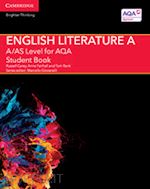Introduction; BEGINNING: 1. Overview; 2. Responding to literature; 3. Texts, contexts and time; 4. Wider reading, research and writing skills; 5. Poetry; 6. Prose; 7. Drama; DEVELOPING: 8. Love Through the Ages: Introduction; 8.1 What is love?; 8.2 Connecting love through the ages: Poetry; 8.3 Connecting love through the ages: Prose; 9. Love Through the Ages: Shakespeare; 9.1 The Elizabethan era; 9.2 Shakespeare's plays; 9.3 Othello; 9.4 The Taming of the Shrew; 9.5 Measure for Measure; 9.6 The Winter's Tale; 10. Love Through the Ages: Poetry; 10.1 Ideal, romantic love; 10.2 Love, sex and inconstancy; 10.3 Marriage and mature love; 10.4 Love, loss and taboos; 10.5 Bringing it all together; 11. Love Through the Ages: Prose; 11.1 Romantic love; 11.2 Marriage and commitment; 11.3 Love and death; 11.4 Social conventions and taboos; 11.5 Jealousy, guilt and remembrance 11.6 Bringing it all together; 12. World War I and its Aftermath: Introduction; 12.1 The Great War; 12.2 The historical and social context; 12.3 Memory and mourning; 12.4 The pre-war cultural context; 12.5 The aftermath; 13. World War I and its Aftermath: Drama; 13.1 The theatre of war and war in the theatre; 13.2 R.C. Sherriff: Journey's End; 13.3 Joan Littlewood and Theatre Workshop: Oh! What a Lovely War; 13.4 Peter Whelan: The Accrington Pals; 13.5 Richard Curtis and Ben Elton: Blackadder Goes Forth; 13.6 David Haig: My Boy Jack; 14. World War I and its Aftermath: Poetry; 14.1 Poetry and remembrance; 14.2 The age of chivalry; 14.3 Which England?; 14.4 Only connect: Finding the themes; 15. World War I and its Aftermath: Prose; 15.1 The novel before the First World War; 15.2 Understanding the set texts; 15.3 Rebecca West: The Return of the Soldier; 15.4 Erich Maria Remarque: All Quiet on the Western Front; 15.5 Ernest Hemingway: A Farewell to Arms; 15.6 Susan Hill: Strange Meeting; 15.7 Pat Barker: Regeneration; 15.8 Sebastian Faulks: Birdsong; 15.9 Sebastian Barry: A Long Long Way; 15.10 Ben Elton: The First Casualty; 15.11 Pat Barker: Life Class; 15.12 Bringing it all together; 16. Modern Times: Literature from 1945 to the Present Day: Introduction; 16.1 Introduction; 16.2 Education, education, education; 16.3 Education and social mobility; 16.4 Representation of class and gender in post-1945 literature; 16.5 Representations of gender; 16.6 The enduring influence of stereotypes; 16.7 Exploring how Sylvia Plath portrays attitudes towards women in 'The Applicant'; 17. Modern Times: Literature from 1945 to the Present Day: Drama; 17.1 Introduction; 17.2 The beginning of Miller's All My Sons; 17.3 The moral implications of plays; 17.4 Tennessee Williams: A Streetcar Named Desire; 17.5 Tennessee Williams: Cat on a Hot Tin Roof; 17.6 Making connections across genres; 18. Modern Times: Literature from 1945 to the Present Day: Poetry; 18.1 Poetry today; 18.2 The poems in this unit; 18.3 Poems about family relationships; 18.4 Poems about relationships, their tensions and endings; 18.5 Two poets exploring one day from different perspectives; 18.6 Poetry about loss and grief; 18.7 Bringing it all together; 19. Modern Times: Literature from 1945 to the Present Day: Prose; 19.1 The texts in this unit; 19.2 Exploring Oranges Are Not the Only Fruit; 19.3 Exploring The Handmaid's Tale; 19.4 Exploring The Color Purple; 19.5 Structure of novels; 19.6 Prose questions in the examination paper; 19.7 Bringing it all together; 20. Texts Across Time; 20.1 Why do a non-examined assessment?; 20.2 The key requirements of the non-examined assessment; 20.3 Choosing your texts; 20.4 Selecting a theme for your comparison; 20.5 Preparing for the assignment; 20.6 Writing the first draft; 20.7 The final draft; 20.8 Unit summary; ENRICHING: 21. Love Through the Ages; 22. World War I and its Aftermath; 23. Modern Times: Literature from 1945 to the Present Day; 24. Texts Across Time; Index; Acknowledgements











